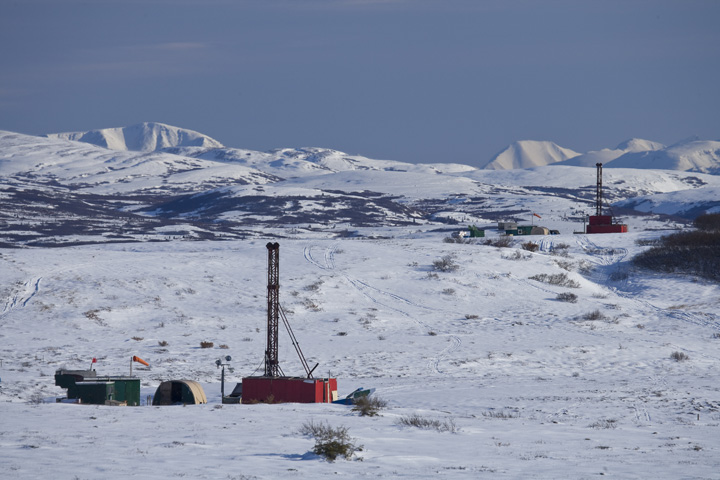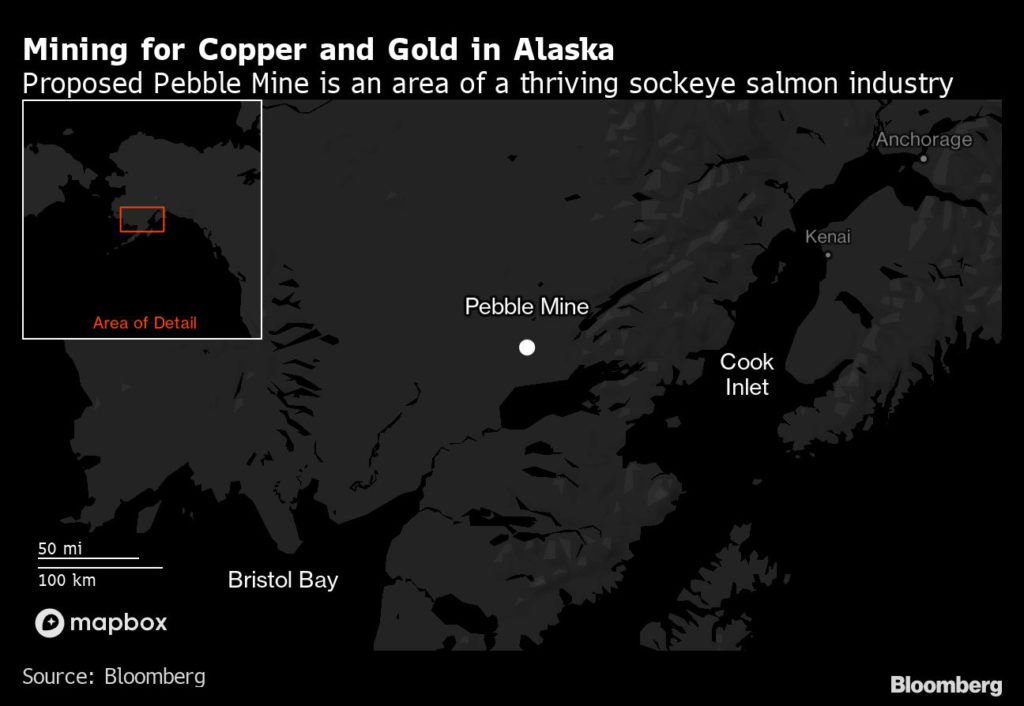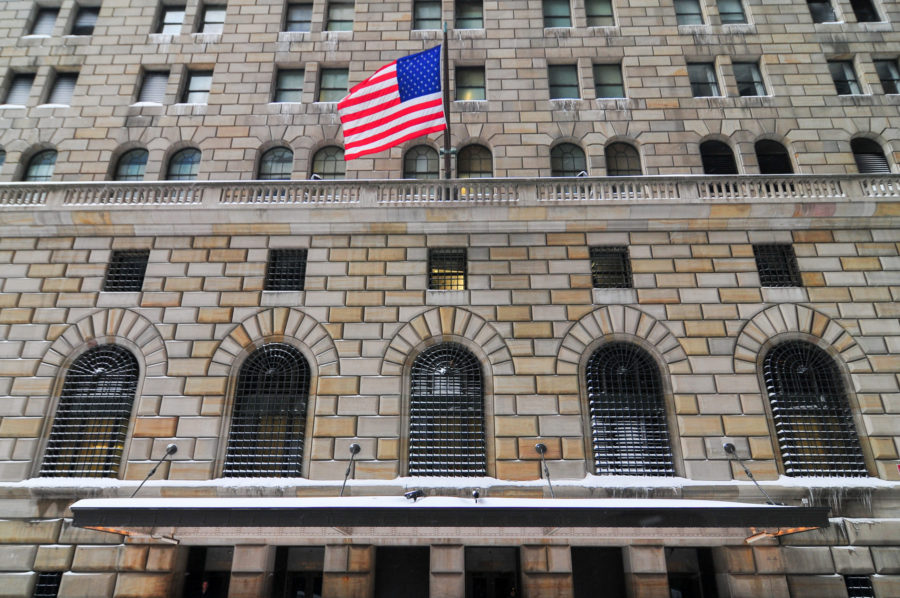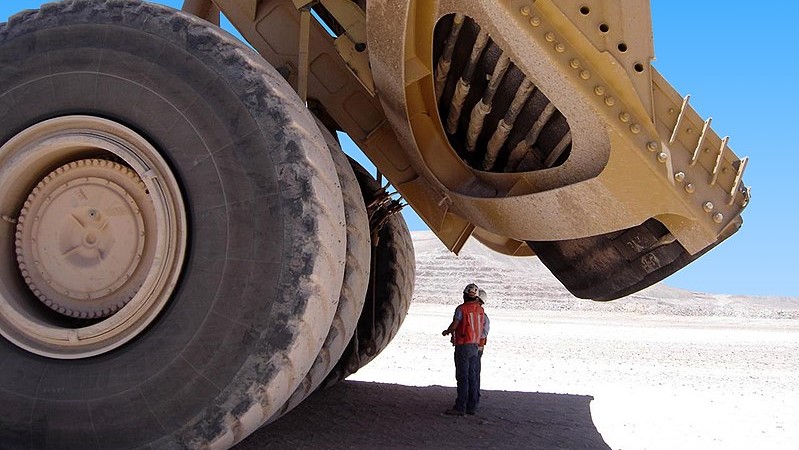Biden blocks Pebble copper-gold mine in Alaska

The Biden administration banned the dumping of mining waste near Bristol Bay, Alaska, issuing a decree that thwarts longstanding plans to extract gold, copper and molybdenum because of potential harm to the region’s thriving sockeye salmon industry.
The Environmental Protection Agency’s final determination, announced Tuesday, effectively blocks the mine planned by Pebble Limited Partnership as well as future mining of the same deposit in headwaters of Bristol Bay, home to the world’s largest sockeye harvest.
“The Bristol Bay watershed is a vital economic driver, providing jobs, sustenance, and significant ecological and cultural value to the region,” EPA Administrator Michael S. Regan said in an emailed release. “With this action, EPA is advancing its commitment to help protect this one-of-a-kind ecosystem, safeguard an essential Alaskan industry and preserve the way of life for more than two dozen Alaska Native villages.”
Pebble, a subsidiary of publicly traded Northern Dynasty Minerals Ltd., has been seeking to mine in the area for roughly two decades and could challenge the decision in federal court. Chief Executive Officer John Shively said the “next step will likely be to take legal action to fight this injustice,” calling the EPA’s move an unprecedented preemptive veto of the project that “is not supported legally, technically or environmentally.”
Shares of Northern Dynasty Minerals fell in Toronto trading.
The ban dovetails with a pledge President Joe Biden made while campaigning for the White House, when he called Bristol Bay “no place for a mine.”
Bristol Bay supplies roughly half of the world’s wild sockeye salmon, generating an estimated $2.2 billion in economic activity each year. A record number of sockeye have returned to Bristol Bay to spawn in recent years, even as other salmon runs have declined.
Katherine Carscallen, director of Commercial Fishermen for Bristol Bay, called EPA’s final action “surreal,” because it “will finally put an end to the threat of Pebble.”
“Any mining of that site would do irreperable damage to the watershed,” Carscallen said. “This is not just about fighting this mine this year or the last 20 years but making sure we won’t be fighting another mine at that site in the future.”
The proposed Pebble Mine has been a source of contention for years. Under former President Barack Obama, the EPA recommended restrictions that would rule out the project. But the agency later withdrew the controls after a legal challenge. A federal judge last year sent the issue back to the EPA for reconsideration.

Critics said the decision conflicts with the Biden administration’s commitment to accelerating the deployment of renewable power and electric vehicles that rely on critical minerals.
These goals “cannot possibly be realized responsibly if US government authorities continue on this adversarial path with domestic mining projects,” the National Mining Association said in an emailed statement. “This end-run of the proper permitting process creates significant regulatory uncertainty for the mining industry during a crisis point for minerals demand.”
The ban, ordered under the Clean Water Act, represents a victory for conservationists and local residents who lobbied the EPA to definitively kill the mine by wielding broad authority under the statute to veto projects involving the discharge of dredged material. The Bristol Bay move marks only the third time in 30 years the EPA has used the authority.
Under the final determination, the EPA is prohibiting certain waters in the Bristol Bay region from being used as disposal sites for waste associated with Pebble Limited Partnership’s plan as well as any future proposals targeting the same deposit that would result in equivalent or greater loss or change to aquatic resources.
The EPA “truly listened to the original stewards and first peoples of this land,” said Alannah Hurley, executive director of the United Tribes of Bristol Bay. “These Clean Water Act protections provide certainty that Pebble cannot be built in Bristol Bay.”
(By Jennifer A. Dlouhy)
More News
German politicians fret over gold reserves held in the US
About 37% of Germany's gold (roughly 1,236 tonnes) are held in vaults of the New York Federal Reserve.
March 31, 2025 | 09:41 am
Codelco regains title as world’s top copper producer
Chile’s state-owned miner produced 1.44 million tonnes of copper last year.
March 31, 2025 | 08:19 am
{{ commodity.name }}
{{ post.title }}
{{ post.excerpt }}
{{ post.date }}



Comments
Michael James Bue
There is no reason to mine Pebble with a mega open pit with surface waste dumps and a huge tailings pond. It can be mined with improved economic benefits from underground leaving a 100-150m Crown Pillar above the underground workings. The open stope with cemented backfill underground mining method would use the concentrator tailings to tight fill the mined stopes. Sensor based sorting underground will remove waste rock for backfill and convey higher grade ore to the surface concentrator. There will not be any permanent surface waste dumps or a huge wet tailings storage facility. The environmental footprint will be minimized and economic benefits maximised. If anyone is interested in my technical report on the project it is available free by email. Any large Cu-Au deposit can be mined profitably by underground methods using modern sensor based sorting equipment to increase the ore grade to the plant. Helping the salmon industry and indigenous Americans are the primary concerns.